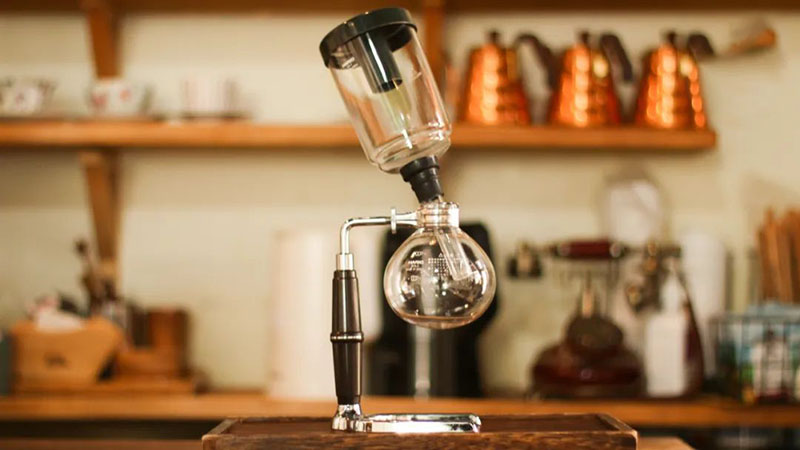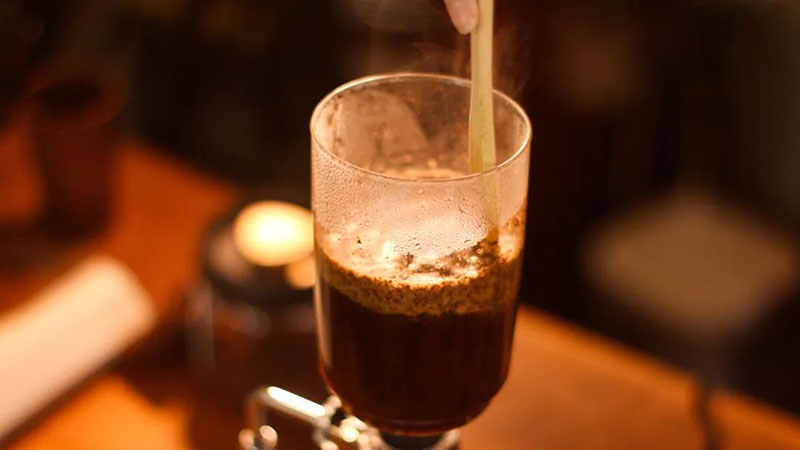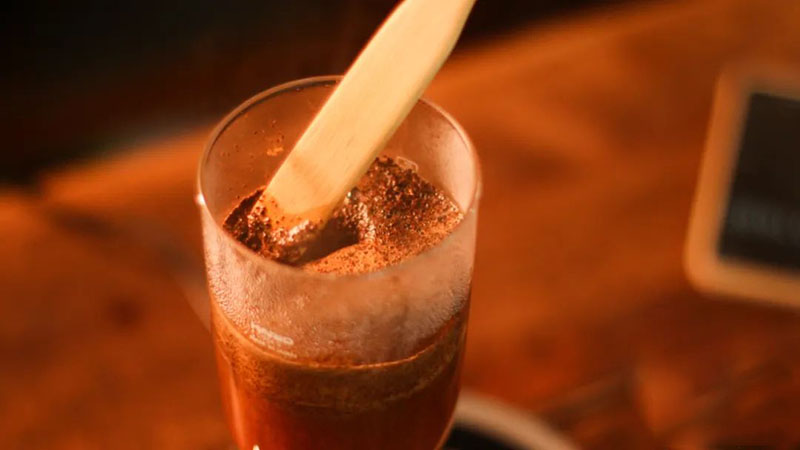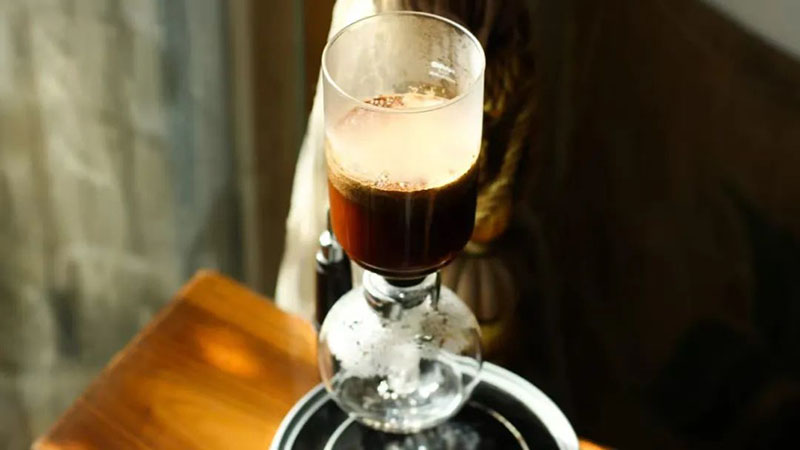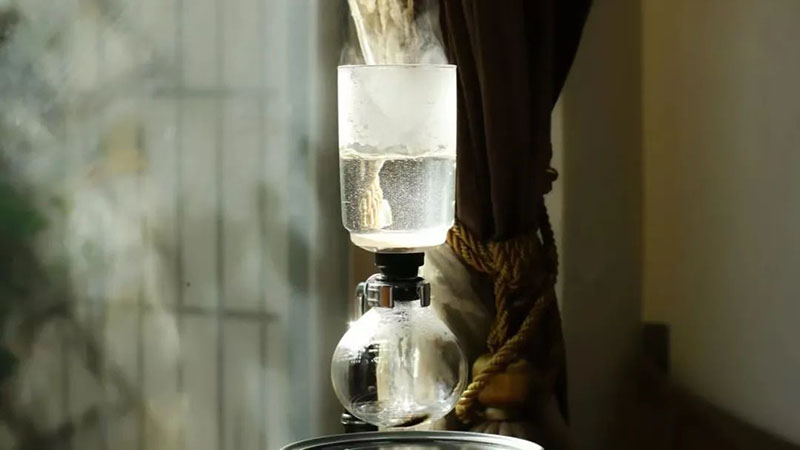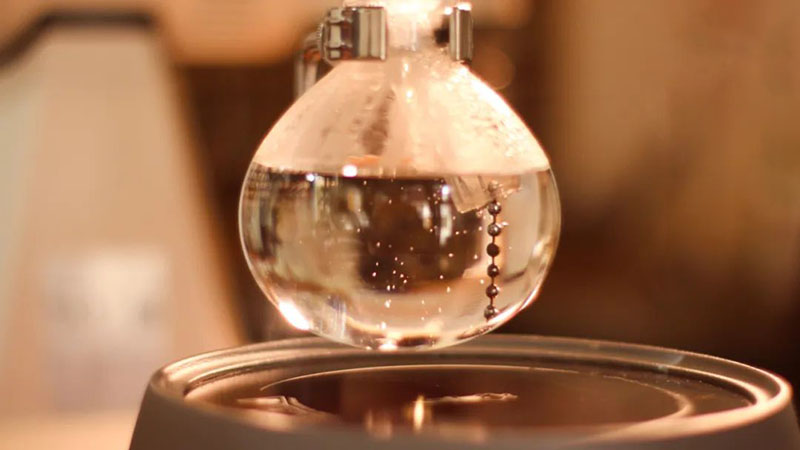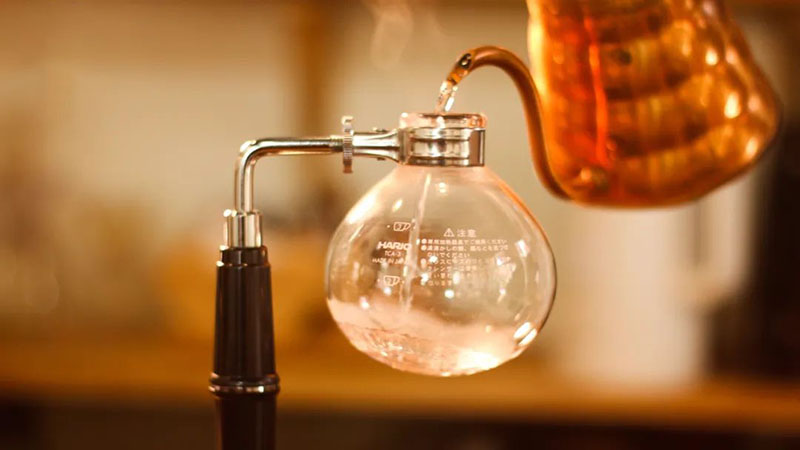Although siphon pots have not become the mainstream coffee extraction method today due to their cumbersome operation and long usage time. However, even so, there are still many friends who are deeply fascinated by the process of making siphon pot coffee, after all, visually speaking, the experience it brings is truly unparalleled! Not only that, but siphon coffee also has a unique flavor when drinking. So today, let’s share how to make siphon coffee.
It should be noted that due to the extraordinary production of siphon pot coffee, before formal use, we not only need to understand its operating principle, but also unravel some of its misconceptions, and recognize and avoid incorrect operations to avoid the risk of exploding the pot during use.
And once we become familiar with it all, we will find that the production and use of siphon coffee pots are not as difficult as we imagine, but rather a bit fun. Let me first introduce you to the operating principle of a siphon pot!
Principle of siphon pot
Although thick, the siphon pot is called a siphon pot, but it is not extracted by the siphon principle, but by the pressure difference generated by thermal expansion and contraction! The structure of a siphon pot is mainly divided into a bracket, a lower pot, and an upper pot. From the figure below, we can see that the bracket of the siphon pot is connected to the lower pot, playing a role in fixing and supporting; The lower pot is mainly used to hold liquids and heat them, and is roughly spherical in shape to achieve more uniform heating; The upper pot, on the other hand, is a cylindrical shape with a slender pipe extending out. The contracted part of the pipe will have a rubber ring, which is a very important core prop.
The extraction process is very simple. At the beginning, we will fill the lower pot with water and heat it up, and then place the upper pot into the lower pot without tightness. As the temperature rises, water expands and accelerates its conversion into water vapor. At this point, we will tightly plug the upper pot to create a vacuum state in the lower pot. Then, these water vapor will squeeze the space in the lower pot, causing the hot water in the lower pot to continuously climb up the pipeline due to pressure. During the time when the hot water is on top of the pot, we can start pouring coffee grounds into it for mixed extraction.
After the extraction is completed, we can remove the ignition source. Due to the decrease in temperature, the water vapor in the lower pot begins to contract, and the pressure returns to normal. At this time, the coffee liquid in the upper pot will start to flow back to the lower layer, and the coffee powder in the coffee liquid will be blocked in the upper pot due to the presence of the filter. When the coffee liquid completely flows down, it is the time when the extraction is completed.
Misconceptions about siphon pots
Due to the fact that the most common practice for siphon coffee is to boil the water in the lower pot until frequent large bubbles appear before starting the extraction process, most people believe that the extraction water temperature for siphon coffee is 100 ° C. But in fact, there are two misconceptions here. The first is the extraction water temperature of siphon coffee, not 100 ° C.
In traditional practice, although the lower pot is heated until bubbles continue to emerge, the hot water at this point has not yet reached its boiling point, at most around 96 ° C, simply because the existence of the sudden boiling chain accelerates the generation of bubbles. Then, after the hot water in the current pot is transferred to the upper pot due to pressure, the hot water will lose temperature again due to the material of the upper pot and the heat absorption of the surrounding environment. Through measurement of the hot water reaching the upper pot, it was found that the water temperature was only around 92~3 ° C.
Another misconception comes from the nodes formed by pressure differences, which does not mean that water must be heated to boiling in order to produce steam and pressure. Water evaporates at any temperature, but at lower temperatures, the evaporation rate is slower. If we plug the upper pot tightly before frequent bubbling, then hot water will also be pushed to the upper pot, but at a relatively slower speed.
That is to say, the extraction water temperature of the siphon pot is not uniform. We can determine the water temperature used based on the set extraction time or the degree of roasting of the extracted coffee.
For example, if we want to extract for a longer period of time or extract difficult to extract light roasted coffee, we can use a relatively high temperature; If the extracted coffee beans are roasted deeper or if you want to extract for a longer period of time, you can lower the water temperature! The consideration of grinding degree is the same. The longer the extraction time, the deeper the baking, the coarser the grinding, the shorter the extraction time, and the shallower the baking, the finer the grinding. (Note that no matter how coarse the grinding of the siphon pot is, it will be finer than the grinding used for hand flushing)
Filter tool for siphon pot
In addition to the bracket, upper pot, and lower pot, there is also a small prop hidden inside the siphon pot, which is the filtering device connected to the boiling chain! The filtering device can be equipped with different filters according to our own preferences, such as filter paper, flannel filter cloth, or other filters (non-woven fabric). (The sudden boiling chain has many uses, such as assisting us in better observing changes in water temperature, preventing boiling, and so on. Therefore, from the beginning, we need to place the upper pot properly.)
The differences in these materials not only change the rate of water infiltration, but also determine the degree of retention of oil and particles in coffee liquid.
The precision of filter paper is the highest, so when we use it as a filter, the siphon pot coffee produced will have a relatively high cleanliness and strong flavor recognition when drinking. The disadvantage is that it is too clean and lacks the soul of a siphon coffee pot! So, in general, when we make coffee for ourselves and don’t mind the hassle, we would recommend using flannel filter cloth as a filtering tool for siphon pot coffee.
The disadvantage of flannel is that it is expensive and difficult to clean. But the advantage is that it has the soul of a siphon pot. It can retain the oil and some particles of coffee in the liquid, giving coffee a richer aroma and mellow taste.
The powder feeding sequence of siphon pot
There are two ways to add powder to siphon coffee, which are “first” and “later”. First pouring refers to the process of adding coffee powder into the upper pot before the hot water enters due to pressure difference, and then waiting for the hot water to rise for extraction; Later pouring refers to pouring coffee powder into the pot and mixing it for extraction after the hot water has completely risen to the top.
Both have their own advantages, but generally speaking, it is more recommended for novice friends to use the post investment method to attract followers. Because this method has fewer variables, coffee extraction is relatively uniform. If it is a first in, the degree of extraction of coffee powder will vary depending on the order of contact with water, which can bring more layers but also require higher understanding from the operator.
Mixing method of siphon pot
When the siphon pot is purchased, in addition to the siphon pot body mentioned above, it will also be equipped with a stirring rod. This is because the extraction method of siphon coffee belongs to soaking extraction, so stirring operation will be used in the production process.
There are many ways of stirring, such as tapping method, circular stirring method, cross stirring method, Z-shaped stirring method, and even ∞ shaped stirring method, etc. Except for tapping method, other stirring methods have relatively strong stirring degree, which can greatly increase the extraction rate of coffee (depending on the stirring strength and speed). The tapping method is to use tapping to pour coffee powder into the water, mainly to allow the coffee powder to fully soak. And we can choose to use these methods according to our own extraction method, there is no limit to using only one.
Backup tool for siphon pot
In addition to the above two tools, we also need to prepare two additional props when extracting the siphon pot, which are a cloth and a heating source.
Two pieces of cloth are needed in total, one dry cloth and one wet cloth! The purpose of a dry cloth is to prevent explosions! Before starting to heat the lower pot, we need to wipe off the moisture in the lower pot of the siphon pot. Otherwise, due to the presence of moisture, the lower pot is prone to explode during the heating process; The purpose of a damp cloth is to control the speed of coffee liquid reflux.
There are many options for heating sources, such as gas stoves, light wave stoves, or alcohol lamps, as long as they can provide heating. Both common gas stoves and light wave stoves can adjust the heat output, and the temperature rise is relatively fast and stable, but the cost is a bit high. Although alcohol lamps have low cost, their heat source is small, unstable, and the heating time is relatively long. But it’s okay, it can all be used! What’s the use of it? It’s recommended that when using an alcohol lamp, it’s best to add hot water to the lower pot, very warm water, otherwise the heating time will be really long!
Alright, there are only a few instructions for making siphon coffee pot. Next, let’s explain how to operate siphon coffee pot!
The production method of siphon coffee pot
Let’s first understand the extraction parameters: a fast-paced extraction method will be used this time, paired with a lightly roasted coffee bean – Kenya Azaria! So the water temperature will be relatively high, around 92 ° C, which means sealing should be done when boiling in the pot until frequent bubbling occurs; Due to the short extraction time of only 60 seconds and the shallow roasting of coffee beans, a grinding process that is even finer than hand washing is used here, with a 9-degree mark on EK43 and a 90% sieving rate on the 20th sieve; The powder to water ratio is 1:14, which means 20g of coffee powder is paired with 280ml of hot water:
1. Firstly, we will prepare all the utensils and then pour the target amount of water into the lower pot.
2. After pouring, remember to use a dry cloth to wipe off any water droplets that fall off the pot to avoid the risk of the pot exploding.
3. After wiping, we first install the filtering device into the upper pot. The specific operation is to lower the boiling chain from the upper pot, and then use force to hang the hook of the boiling chain on the conduit. This can tightly block the outlet of the upper pot with the filtering device, preventing too much coffee grounds from seeping into the lower pot! At the same time, it can effectively slow down the speed of water discharge.
4. After installation, we can place the upper pot on the lower pot, remember to ensure that the boiling chain can touch the bottom, and then start heating.
5. When the current pot starts to continuously produce small water droplets, don’t rush. After the small water droplets turn into large ones, we will straighten the upper pot and press it in to put the lower pot into a vacuum state. Then, just wait for all the hot water in the lower pot to flow to the upper pot, and you can start extracting!
6. When pouring coffee powder, synchronize the timing and start our first stirring. The purpose of this stirring is to fully immerse the coffee grounds, which is equivalent to steaming hand brewed coffee. Therefore, we first use the tapping method to pour all the coffee grounds into the water to evenly absorb water.
7. When the time reaches 25 seconds, we will proceed with the second stirring. The purpose of this stirring is to accelerate the dissolution of coffee flavor compounds, so we can use a technique with relatively high stirring intensity here. For example, the current method used in Qianjie is the Z-shaped mixing method, which involves drawing the Z shape back and forth to stir coffee powder for 10 seconds.
8. When the time reaches 50 seconds, we proceed with the final stage of stirring. The purpose of this stirring is also to increase the dissolution of coffee substances, but the difference is that because the extraction reaches the end, there are not many sweet and sour substances in the coffee, so we need to slow down the stirring force at this time. The current method used on Qianjie is the circular mixing method, which involves slowly drawing circles.
9. At 55 seconds, we can remove the ignition source and wait for the coffee to reflux. If the speed of coffee reflux is slow, you can use a damp cloth to wipe the pot to accelerate the temperature drop and speed up the coffee reflux, avoiding the risk of over extraction of coffee.
10. When the coffee liquid is completely returned to the lower pot, extraction can be completed. At this point, pouring out the siphon pot coffee for tasting may result in a slight scald, so we can let it dry for a while before tasting.
11. After being left for a while, taste it! In addition to the bright cherry tomatoes and sour plum aroma of Kenya, the sweetness of yellow sugar and apricot peaches can also be tasted. The overall taste is thick and round. Although the level is not as obvious as hand brewed coffee, siphoning coffee does have a more solid taste and a more prominent aroma, providing a completely different experience.
Post time: Jan-02-2025






